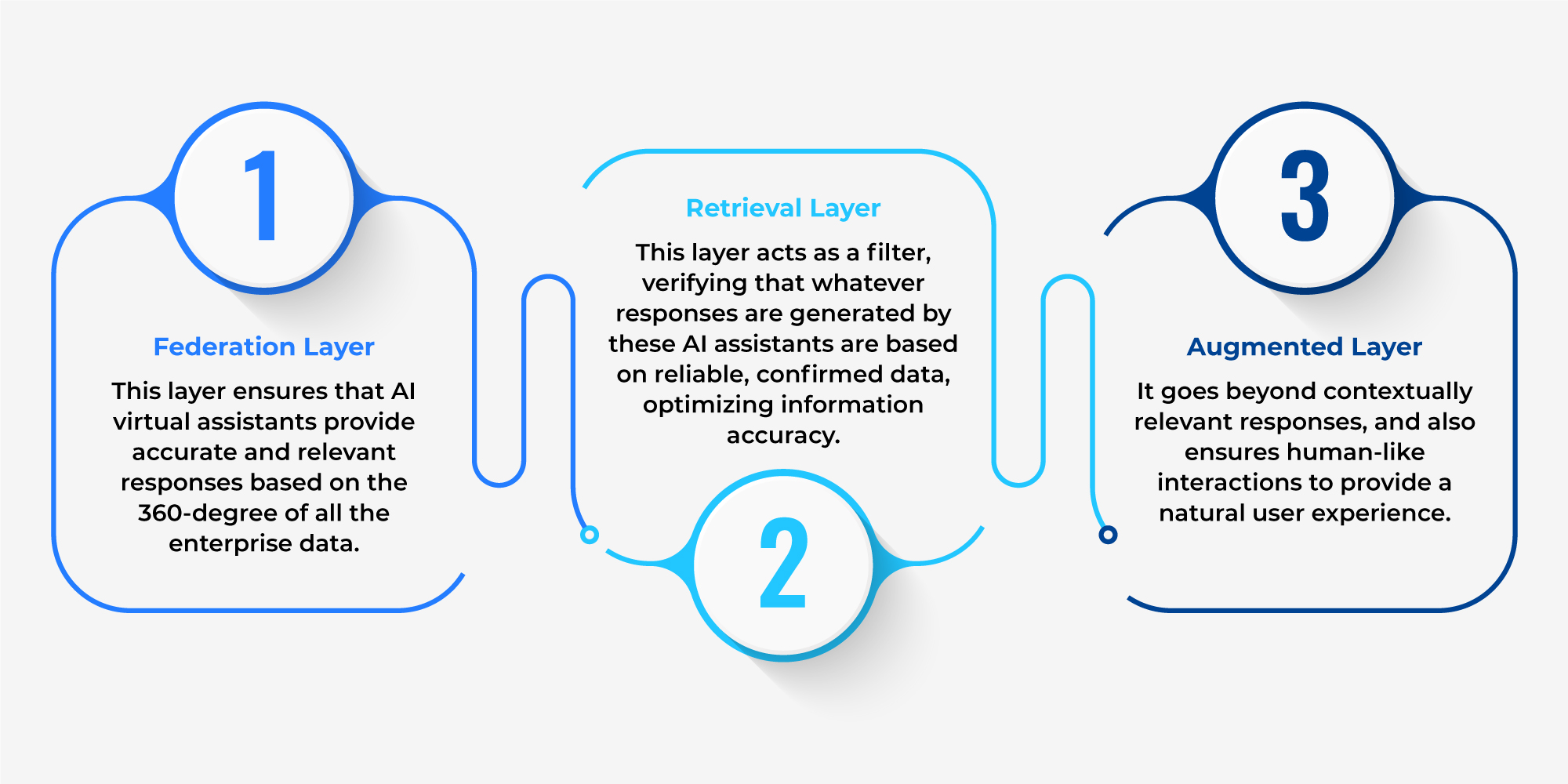
With the advancements in artificial intelligence, conversational AI has emerged as a powerful tool in the customer support landscape. AI chatbots and virtual assistants have come a long way from answering basic queries to handling complex workflows. Using technologies like natural language processing (NLP) and machine learning, these AI virtual assistants can understand the context and intent behind customer queries, making them effective in handling even complex queries.
Businesses are increasingly investing in these technologies to excel in customer support, streamline operations, and boost engagement.
According to a report shared by Gartner, “ By 2027, chatbots will become primary customer service channels for roughly a quarter of organizations”.
However, along with its multiple advantages, there are also a few risks associated with conversational AI that need to be addressed to ensure a smooth execution. This blog throws light on the potential risks associated with it along with the solutions that can be implemented to mitigate these risks.
7 Risks to Mitigate

1. Lack of Personalization
One of the challenges faced by users while dealing with conversational AI solutions is receiving generic responses. With this, these solutions fall short in catering to the requirements of the users of getting personalized responses, making them feel unappreciated and disvalued.
To solve this problem, natural language processing and machine learning are at the rescue. NLP and ML algorithms help AI virtual assistants to learn from previous customer interactions. This ensures that the responses delivered to the customers are based on their tastes, preferences, past behaviors, and user history. This allows virtual assistants to create a more personalized and meaningful user experience.
2. Lack of Emotional Intelligence in AI-driven Conversations
Most conversational AI solutions fail to detect human emotions like sarcasm, frustration, or enthusiasm and respond appropriately to the same. This makes users feel like these AI chatbots are robotic, impersonal, and unempathetic in their approach.
To address this, sentiment analysis offers a promising solution that helps virtual assistants to understand and interpret user sentiment. With this, it becomes easier for AI chatbots to gauge the emotional tone of conversations, and to adapt responses accordingly.
Apart from that, we can adjust the level of creativity in responses generated by AI virtual assistant with it’s temperature control setting. Higher temperature leads to more creative and less factual responses. By fine-tuning the responses based on user sentiment, it becomes possible to provide an engaging and personalized experience to the user.
Want to know more about the temperature setting function?
3. Struggles with Accessing Federated Control Across Silos
Many conversational AI solutions lack the capability to retrieve and integrate data from disparate content silos. This results in incomplete or inaccurate responses as artificial intelligence fails to retrieve all the relevant information stored across various systems such as knowledge bases, CRMs, ticketing systems, and so on. In such scenarios, users may receive fragmented answers or be forced to manually search multiple sources to find the required information.
Recently, SearchUnify’s Virtual Assistant (SUVA) helped one of our customers to address this issue as it is built with robust federated search capabilities, allowing it to pull data from multiple systems and silos in real-time. This integration enables SUVA to provide users with holistic, accurate, and comprehensive answers by breaking down content barriers. SUVA’s Federated Retrieval Augmented Generation (FRAG) framework includes:
Three layers of FRAG:

4. Inability to Handle Multi-Turn Conversations
Virtual assistants face issues while handling complex multi-turn conversations, where users have to go back and forth to exchange conversations with virtual assistants. This becomes more challenging when users switch between topics.
SUVA is designed to handle multi-turn conversations effectively. Using advanced natural language understanding (NLU), it interprets the user intent accurately across various points in the conversation, allowing it to switch between topics fluidly, and pick up where the user left off without losing track of the conversational flow. This thus, provides a seamless user experience.
Facing challenges with conversational AI? Navigate them with confidence!
Talk to Our Experts5. Limited Integration with Enterprise Systems
Traditional chatbots operate in silos and are unable to fetch data from CRM, ERP, or other enterprise systems. This restricts their ability to deliver precise, data-driven answers or solve complex problems that require information from different systems.
SUVA addresses this challenge by seamlessly integrating with a wide range of enterprise systems. This allows it to pull real-time data and handle complex requests (checking ticket status, getting case history, escalations, and live transfer to agents).
6. Limited Multilingual Capabilities
Many conversational AI systems struggle to provide consistent support across multiple languages. For global businesses, this becomes problematic while dealing with a diverse population which leads to poor customer service experiences for non-English speakers or customers with different dialects.

SUVA is designed to answer customer queries in 30+ languages and is able to break language barriers by adopting a multilingual approach while dealing with a global audience. It goes beyond normal language translation and ensures that it is aware of culture and can interpret regional nuances or idiomatic expressions effectively. Not only this it detects the location of the user and then automatically starts conversing in the respective language. This reduces user efforts to manually change language settings thus, improving customer experience.
7. Lack of Speech-to-Text (STT) and Text-to-Speech (TTS) approach
Conversational AI systems often rely solely on text-based communication, which limits accessibility and engagement for users who prefer or require voice interactions. This can create barriers for users with disabilities or those in hands-free environments. Additionally, in today’s fast-paced world, most users do not have time to type the whole issue. Enters, SUVA’s speech-to-text feature makes it easier for them to communicate and saves their time as well.
SUVA also incorporates a Text-to-Speech (TTS) feature, ensuring users are getting responses on the go and this multimodal approach is saving their time and enhancing the customer experience.
Conclusion
From the above discussion, we can conclude that conversational AI has immense potential and can help to revolutionize the customer support landscape. But along with its remarkable capabilities, the few risks that are discussed above need to be addressed to ensure smooth customer service operations.
Modern-day chatbots leverage advanced technologies including NLP, NLU, and machine learning to overcome these challenges and provide a seamless experience.
As discussed, SUVA is one of the advanced AI-powered virtual assistants that can take your customer service experience to the next level.
















